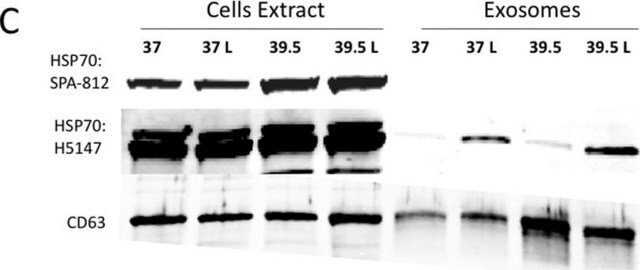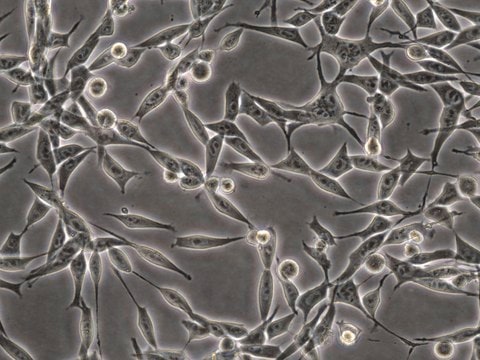MAB2137
Anti-Homing Receptor Antibody, clone A020
clone A020, Chemicon®, from rat
Synonym(s):
CD44s, HCAM, Pgp-1
About This Item
Recommended Products
biological source
rat
Quality Level
antibody form
purified antibody
antibody product type
primary antibodies
clone
A020, monoclonal
species reactivity
mouse, human, rat, pig, rabbit, canine, bovine
manufacturer/tradename
Chemicon®
technique(s)
ELISA: suitable
flow cytometry: suitable
immunocytochemistry: suitable
immunohistochemistry: suitable
western blot: suitable
isotype
IgG2b
NCBI accession no.
UniProt accession no.
shipped in
dry ice
target post-translational modification
unmodified
Gene Information
human ... CD44(960)
Related Categories
Specificity
Immunogen
Application
Flow Cytometry :1:1000
Immunofluorescence 1:200
Immunohistostaining of paraffin embedded tissues. 1:250; antigen retrieval is usually not needed.
Immunoprecipitation 1:200
Western blotting: non-reduced conditions only; 90kDa band is detected; blocking PBS/5% milk protein, primary antibody dilution 1:1000 o/n incubation.
Optimal working dilutions must be determined by end user.
Cell Structure
Adhesion (CAMs)
Target description
Physical form
Storage and Stability
Analysis Note
Cells of epithelium and highly expressed by carcinomas
Other Notes
Legal Information
Disclaimer
Not finding the right product?
Try our Product Selector Tool.
Storage Class
12 - Non Combustible Liquids
wgk_germany
WGK 2
flash_point_f
Not applicable
flash_point_c
Not applicable
Certificates of Analysis (COA)
Search for Certificates of Analysis (COA) by entering the products Lot/Batch Number. Lot and Batch Numbers can be found on a product’s label following the words ‘Lot’ or ‘Batch’.
Already Own This Product?
Find documentation for the products that you have recently purchased in the Document Library.
Our team of scientists has experience in all areas of research including Life Science, Material Science, Chemical Synthesis, Chromatography, Analytical and many others.
Contact Technical Service








